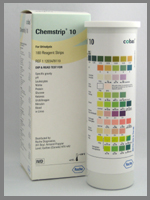Newsletter - March 2016
What Your Dog's Breath Can Tell You
Hudson arrived with the worst breath I've every smelled in all the years I've known dogs. Even poop-eating dogs have better breath. Even anal glands smell better. Seriously. I couldn't be in the room with him unless a window was open, and that's saying something.
Getting to the bottom of this involved a few things that are worth sharing.
If your dog has sweet breath, and I mean sweet like a candy, sugary smell, you might want to check urine and see if there's glucose in it. Many diabetic dogs have this sweet scent coming from their mouths.
If your dog has that doggy odor that resembles some cheeses, s/he might need a dental cleaning, and/or oral check up. Even if the teeth look nice and clean, infection can be brewing beneath the gum line.
A stronger smell can be associated with cancers including oral cancers, so it's always a good idea to ask the vet to check.
Bad breath (think rotting garbage) can be linked with GI diseases. Poor digestion, slow transit time...it's like a backed up sewer in there.
Kidney and liver disease can also cause nasty breath.They have a certain smell that is difficult to describe, but it's foul. Think of urine combined with rotting fish.
Given that Hudson had never seen a vet in his 5 years of life, and he'd just had his teeth cleaned by the shelter vet, I wondered about kidney, or liver function. Out of curiosity, I used Chemstrip® 10 to check his urine and found concentration to be fairly poor, urine to be acidic, and billirubin (usually points to liver disease). I checked it again and found the same result, so we headed to the vet. This is where it gets interesting.
Blood tests showed a healthy dog. Urinalysis also showed no problem Really? How could that be? The vet wondered the same thing, so he suggested that I test Hudson's urine again the next morning (always test the first piddle of the day while it's fresh and warm) and if I saw the same result, bring the sample to the clinic to be checked in-house. Interestingly, the in-house test strips showed the exact same results as what I'd seen at home. Bottom line is that labs can make mistakes. We were referred to a specialist for ultra sound which showed normal organs, so we're testing urine at home per the specialist for another 2 weeks to see where this leads.
I talk about Chemstrip® at nearly every seminar. Not only does it help toward early detection, but it sometimes makes us question results from a lab. That part is very important. You can end up treating the dog for a problem that doesn't exist (2 of our previous dogs had lab test results showing elevated urine pH, but that wasn't the case in real life), or ignoring an inability to concentrate urine. Chemstrip® 10 is more expensive than the lower versions (Chemstrip® 9, for instance), but is the only one that shows urine concentration and even at this higher price, is less than 2 visits to have urine checked at a clinic.There are 100 strips in a box (watch the expiry date though), so in actual fact it's a bargain. Your pharmacy can usually order them for you, or you can find them on-line.
As to Hudon's breath, I'm pleased...ok, relieved!...to say it's great now. The answer was a combination of Tylosin to calm his thickened intestine, and venison kibble which will be changed to home-prepared venison once the specialist finishes any testing needed. Changing the diet sooner can skew test results.
Here's what the Chemstrip® package looks like. I'm not affiliated with it at all. In my opinion, there are no replacements for this product. All dogs deserve the best.

Monica
"One trained dog equals 60 search-and-rescue workers.” ~ Charles Stoehr